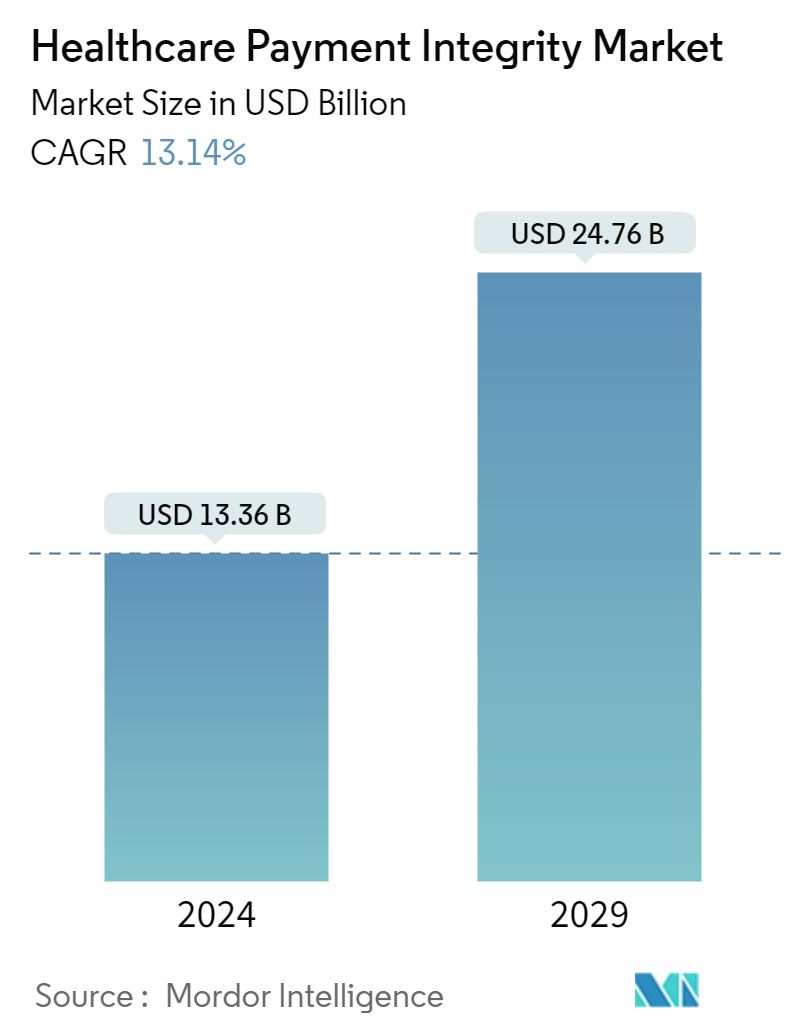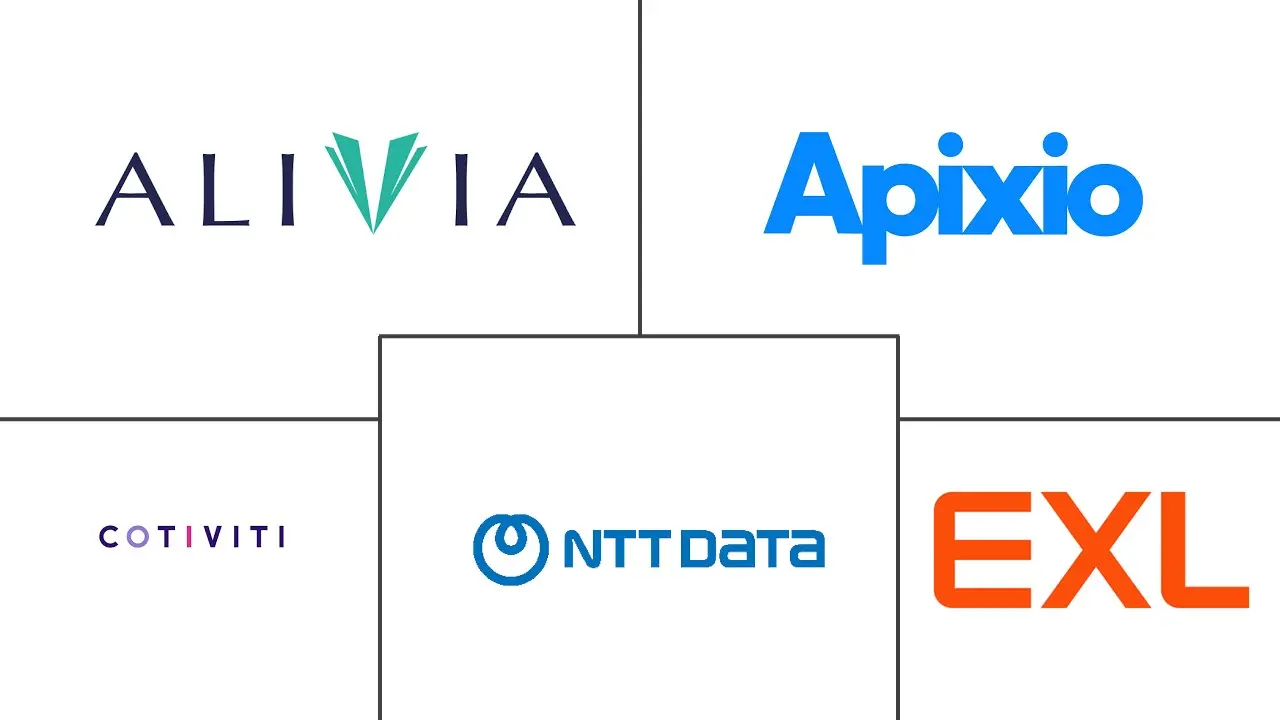Market Size of Healthcare Payment Integrity Industry

| Study Period | 2021 - 2029 |
| Market Size (2024) | USD 13.36 Billion |
| Market Size (2029) | USD 24.76 Billion |
| CAGR (2024 - 2029) | 13.14 % |
| Fastest Growing Market | Asia Pacific |
| Largest Market | North America |
Major Players
*Disclaimer: Major Players sorted in no particular order |
Healthcare Payment Integrity Market Analysis
The Healthcare Payment Integrity Market size is estimated at USD 13.36 billion in 2024, and is expected to reach USD 24.76 billion by 2029, growing at a CAGR of 13.14% during the forecast period (2024-2029).
The healthcare payment integrity market is critical to the broader healthcare ecosystem. It is focused on ensuring that payments within the healthcare sector are accurate, efficient, and compliant with regulations. These solutions help healthcare payers such as insurance companies, government programs, and managed care organizations to detect and prevent improper payments, reduce fraud, and ensure that claims are processed correctly the first time. Key factors that drive the growth and evolution of the market include regulatory changes and compliance, innovations in payment integrity, and fraud prevention.
The rising prevalence of fraud, waste, and abuse (FWA) in the sector, particularly within the expanding realm of telehealth, is a significant driver for market growth. For instance, according to the Healthcare Fraud Prevention Partnership (HFPP) in May 2023, individuals may engage in "telefraud" schemes, where telehealth visits are used as a cover to steal patient identities or to bill for unnecessary or non-existent services. Moreover, aggressive telemarketing and telehealth services are often used to push unnecessary durable medical equipment (DME), genetic testing, and diagnostic services, contributing to the burden on the healthcare system. These factors contribute to the growth of the market.
In addition, payment integrity involves ensuring that claims are paid accurately, efficiently, and in compliance with all regulations, which helps reduce costs and prevents revenue leakage. For instance, an article published by HealthEdge in June 2024 highlighted the need for multiple interfaces and ensures consistent, accurate payments. The HealthEdge Source is designed to streamline and enhance these processes, offering healthcare payers a robust platform that integrates seamlessly with existing systems. This allows organizations to control claims payment workflows, reduce dependency on third-party vendors, and make real-time business decisions based on unified data.
The varying impact of methodological adjustments on the improper payment rates for Medicare Part D highlighted the importance of adapting payment integrity solutions to new methodologies. For instance, in fiscal year 2023, the Centers for Medicare & Medicaid Services (CMS) reported that the improper payment rate of Medicaid saw a significant decrease from 15.62% in 2022 to 8.58% in 2023. The reduction was primarily due to improved documentation practices, though 82% of the improper payments were related to insufficient documentation rather than fraud or abuse. This substantial decrease highlighted progress in addressing documentation issues and indicated the effectiveness of payment integrity measures, thereby driving their adoption and contributing to the market’s growth.
However, the complexity and fragmentation of healthcare systems and high implementation and maintenance costs restrain market growth.

